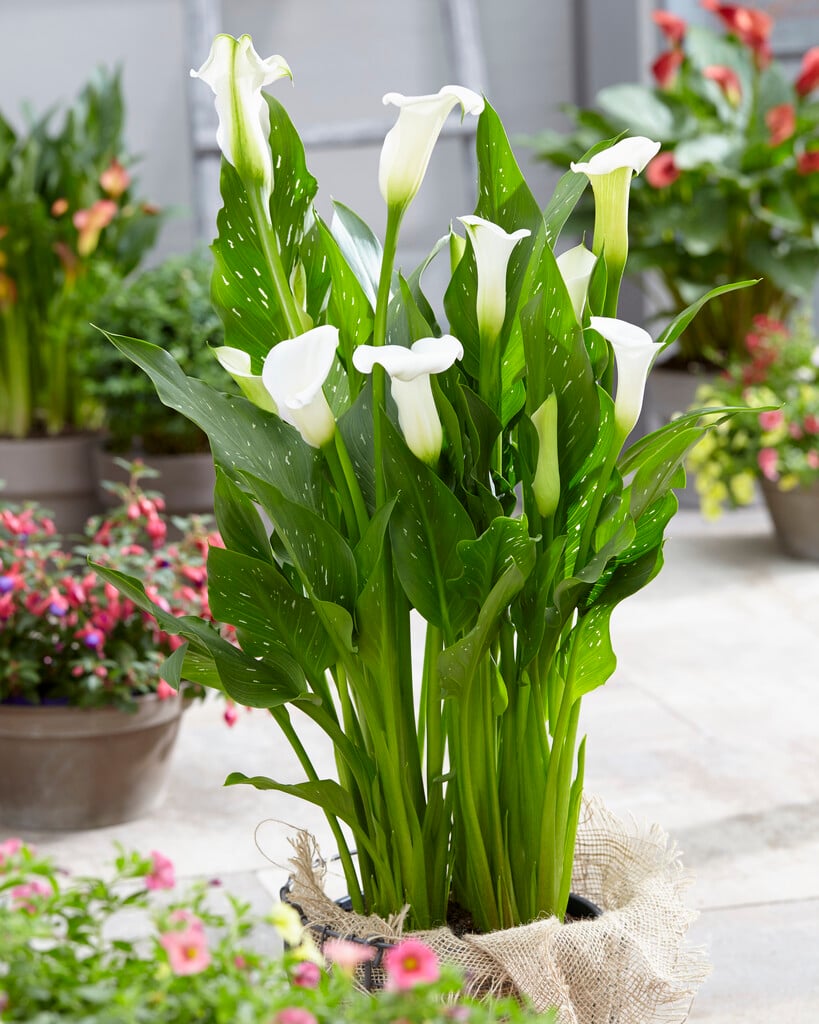Zantedeschia 'Sapporo'PBR
arum lily 'Sapporo'
A tender perennial to 50cm tall, forming an upright clump of slender, white-spotted, dark green leaves. In summer it produces striking flowers composed of pure white spathes wrapped round a yellow spadix; the flowers are good for cutting. Grow as a houseplant or use for summer bedding
Size
Ultimate height
0.1–0.5 metresTime to ultimate height
2–5 yearsUltimate spread
0.1–0.5 metresGrowing conditions
Moisture
Moist but well–drainedpH
Acid, Alkaline, NeutralColour & scent
| Stem | Flower | Foliage | Fruit | |
| Spring | Green | |||
|---|---|---|---|---|
| Summer | White | Green | ||
| Autumn | Green | |||
| Winter |
Position
- Full sun
Aspect
South–facing or West–facing
Exposure
Sheltered Hardiness
H1CBotanical details
- Family
- Araceae
- Native to GB / Ireland
- No
- Foliage
- Deciduous
- Habit
- Clump forming
- Potentially harmful
- Harmful if eaten, skin/eye irritant. Wear gloves and other protective equipment when handling. Pets: Harmful if eaten, skin/eye irritant - for further information and contact numbers regarding pets, see the HTA guide to potentially harmful plants
- Genus
Zantedeschia can be deciduous or semi-evergreen, tuberous perennials with lance-shaped or arrow-shaped leaves and tiny yellow flowers forming a dense spike-like spadix, with a showy, hood-like spathe, sometimes followed by orange berry-like fruits
- Name status
Accepted
How to grow
Cultivation
Grow in peat-free, loam-based potting compost in full light. When in growth, water freely and apply a balanced liquid fertiliser every 2-3 weeks. Calla lilies need a period of dormancy over winter, with little or no water. Once the leaves die down after flowering, move them to a dry, frost-free, preferably dark location until spring. See Zantedeschia cultivation
Propagation
Propagate by division in spring
Suggested planting locations and garden types
- Houseplants
- Patio and container plants
- Sub-tropical
- Bedding
- Conservatory and greenhouse
- Cut flowers
Pruning
Remove the flowers as they start to fade, pulling the entire stem out at the base
Pests
May be susceptible to glasshouse red spider mite
Diseases
Generally disease-free
Get involved
The Royal Horticultural Society is the UK’s leading gardening charity. We aim to enrich everyone’s life through plants, and make the UK a greener and more beautiful place.
